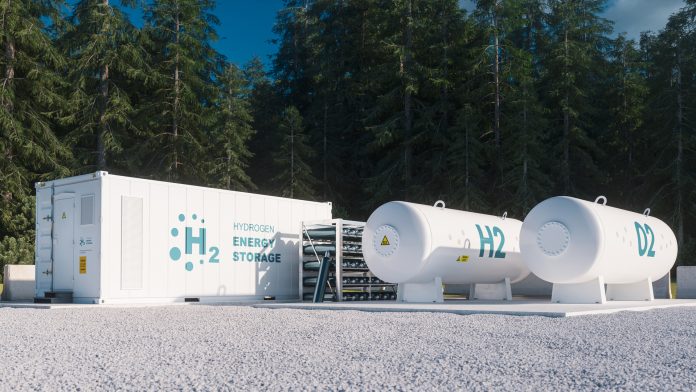A team of researchers has developed a new method of producing green hydrogen using sunlight-photosensitive-nanostructured electrodes.
As published in the journal of Solar Energy Materials and Solar Cells, researchers from the Institut national de la recherche scientifique (INRS) and the Institute of Chemistry and Processes for Energy, Environment and Health (ICPEES) have developed new sunlight-photosensitive-nanostructured electrodes for producing green hydrogen.
According to the INRS Professor My Ali El Khakani, Quebec could strategically position itself in this energy sector of the future. Khakani, a physicist and nanomaterials specialist, explains: “Thanks to high-performance nanomaterials, we can improve the efficiency of water dissociation to produce hydrogen. This ‘clean’ fuel is becoming increasingly important for the decarbonisation of the heavy-duty trucking and public transportation. For example, buses using hydrogen as a fuel are already in operation in several European countries and in China. These buses emit water instead of greenhouse gases.”
In order to produce hydrogen, researchers often use electrolysis to split water molecules into oxygen and hydrogen. However, industrial electrolysers are very energy-intensive and require large investments. Inspired by photosynthesis, the INRS and ICPEES researchers have developed specially engineered and structured electrodes that split water molecules under the sun’s light. This is a process known as photocatalysis.
Increasing the photosensitivity of the electrodes
To minimise wasted solar energy, the research teams selected a very abundant and chemically stable material: titanium dioxide (TiO2). TiO2 is a semiconductor known for being photosensitive to UV-light, which accounts only for 5% of the solar irradiance. Researchers have used their expertise in the field to first change the atomic composition of TiO2 and extend its photosensitivity to visible light. They were able to produce electrodes that can absorb up to 50% of the light emitted by the sun. A significant gain right from the start!
The researchers then proceeded with the nanostructuration of the electrode to form a network of TiO2 nanotubes that resembles a beehive-like structure. This method multiplied the effective surface area of the electrode by a factor of 100,000 or more. Professor El Khakani added:”Nanostructuring maximises the ratio between surface and volume of a material. For example, TiO2 nanostructures can offer a surface area of up to 50 m2 per gram. That’s the surface area of a mid-size flat!”
The final step of the electrode elaboration is their ‘nanodecoration’. This process consists of depositing catalyst nanoparticles on the otherwise infinite network of TiO2 nanotubes to increase their efficiency of hydrogen production. To achieve this nanodecoration step, the researchers used the laser ablation deposition technique. The challenge was not only to control the size, dispersion, and anchorage of catalyst nanoparticles on the TiO2 nanotube matrix, but also to find alternatives to the costly iridium and platinum classical catalysts.
This research identified cobalt oxide (CoO) as an effective co-catalyst for splitting water molecules. A comparison of the two materials showed that CoO nanoparticles enabled a tenfold increase the photocatalytic efficiency of these new nanodecorated electrodes under visible light compared to bare nanotubes.









